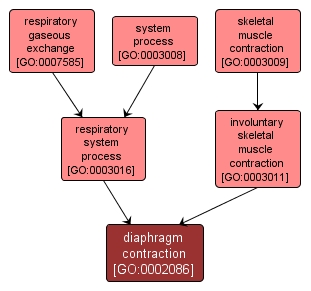| Desc: |
A process whereby force is generated within involuntary skeletal muscle tissue, resulting in a change in muscle geometry. This process occurs in the diaphragm. Force generation involves a chemo-mechanical energy conversion step that is carried out by the actin/myosin complex activity, which generates force through ATP hydrolysis. The diaphragm is a striated muscle that is necessary for the process of respiratory gaseous exchange. |














